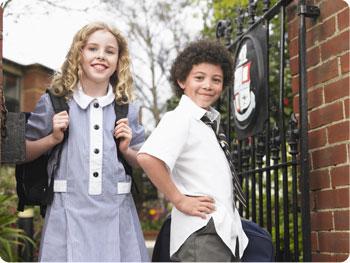We’ve all heard the stories of the traditional school trip disappearing under a pile of Health and Safety paperwork and threatened by an increasing fear of litigation. In a move to debunk the ‘school trip myth’, Royal Society for the Prevention of Accidents (RoSPA) recently brought out a common sense guide for schools, extolling the benefits of extra-curricular outings and reassuring teachers that, with a few sensible precautions, it needn’t be a health and safety minefield.
This principle is enshrined in the RoSPA mantra: “We must try to make life as safe as necessary, not as safe as possible”. The latest ‘Planning and Leading Visits and Adventurous Activities’ guide gives detailed information and advice on the things that need to be considered when planning and undertaking school visits. The aim is to help teachers to develop a practical approach that maximises opportunities for enjoyment and learning while taking sensible action to avoid school students being hurt in avoidable accidents.
 Firstly, RosPA are clear about the benefits of a school trip. As well as being a welcome break from the school routine, school visits enable pupils to learn new skills, gain fresh understanding and develop positive attitudes towards their environment, their peers and their teachers.
Firstly, RosPA are clear about the benefits of a school trip. As well as being a welcome break from the school routine, school visits enable pupils to learn new skills, gain fresh understanding and develop positive attitudes towards their environment, their peers and their teachers.
Despite this, many school heads, teachers and other colleagues fear the consequences of an injury to a child following an accident which occurs on a school or college trip – including the possibility of civil litigation for damages and criminal prosecution for health and safety offences e.g. under the Health and Safety at Work Act 1974. We tend to remember examples of school visits where an individual was seriously injured or killed because, rightly, these events receive a lot of attention in the national and local press, but these are very rare occurrences. The guide puts these concerns into their statistical context. HM Government estimates that, in the UK, school age children undertake 7-10 million days of activity outside the classroom each year. An accident happening does not necessarily mean there has been a breach of health and safety law, in the period 2005-2010 there were only two HSE prosecutions relating to school trips in the UK.
RoSPA outlines a series of checklists to address in organising a school trip. The list includes: communications with parents, staff/adult/pupil ratios, insurance, and most importantly – the risk assessment ie: thinking through potential issues that arise and putting in place reasonable measures to address them. For example, an unlikely but potential risk is a child getting separated from the group – a school can address this by ensuring they have the right supervisory ratio, take regular head counts and teaching children the importance of not wandering off. Additionally, a school can take further precautions by using an ID wristband, especially when dealing with younger children. The wristband can also include any important dietary or medical information. Purchasing a wristband printer is another simple, cost-effective way of making school trips safer. Schools can change the information on each trip and add their own logo or pictures.
Stepping outside of the classroom continues to play an important role for children to develop confidence and judgement in balancing everyday risks.
Tom Mullarky MBE, RoSPA Chief Executive, says:
“The concept of ‘risk/ benefit assessment’ should be our guiding light. As previous generations have learnt by experience, it is rare that a well-planned exercise leads to accidental injury. It will instead be most likely to bring a sense of enterprise, accomplishment and fun, so vital for judgement, maturity and well-being, which must nearly always offset the residual and inevitable risk”.